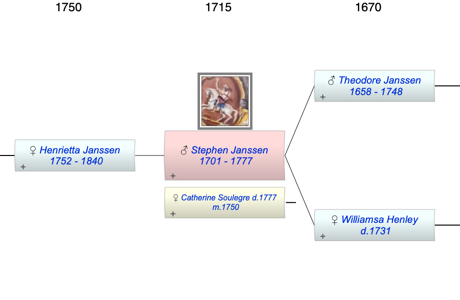While serving as mayor his business suffered, a government pension supported him.
Badge of a Grand President of the Anti-Gallican Society
London, England, around 1750
The Anti-Gallican Society was formed around 1745 in opposition to the influx of French goods then coming into England, and the pervasive cultural influence of France. From 1751-53 the Society offered prizes for goods manufactured in England, and continued in being until the end of the Napoleonic Wars. This badge shows the coat of arms adopted by the Society: St George (the patron saint of England) on horseback, spearing the French flag, executed in painted enamel.
One of the early Grand Presidents of the Society was Stephen Theodore Janssen, proprietor of the Battersea enamel works in London. Janssen had perfected the technique of applying transfer-printed decoration to a white enamel ground, and operated the enamel works at York House in Battersea, from 1753 to 1756. The Battersea factory produced a wide variety of boxes and other small items, often known as 'toys'.
This is the only surviving Grand President's Badge, and certainly the most ornate of the many enamelled badges and boxes produced for the Society. It is equally remarkable as a rare survival of a piece of jewellery in the Rococo style, with its border of rock-crystals in a silver setting of asymmetrical scrolls and curves (see reverse). The row of ships along the top bear no relation to the Society's arms and may have been added for another early Grand President, Admiral Vernon (1684-1757) a great English naval hero.
H. Tait and C. Gere, The jewellers art: an introduction (London, The British Museum Press, 1978)
C. Gere and others, The art of the jeweller: a cat, 2 vols. (, 1984) |

 +=
+= 